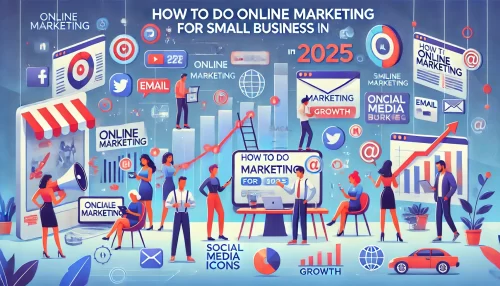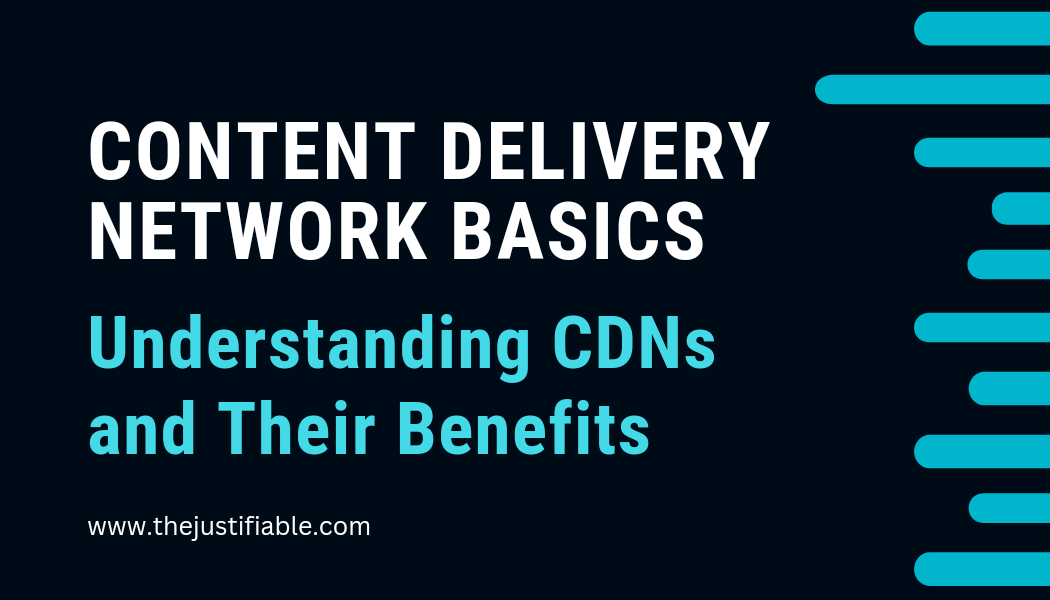Table of Contents
Ever wondered how the paraphrasing tool Quillbot holds up across different types of content? Can it truly simplify dense technical manuals, preserve your personal voice in creative writing, or polish SEO articles without ruining keyword flow?
What about professional emails, product descriptions, or legal disclaimers—can one tool really handle it all?
I tested Quillbot on ten different writing formats to find out where it shines and where it needs a human touch.
If you’re curious whether it’s worth using for your own content, this breakdown will give you a clear and honest look into how well Quillbot performs across styles, tones, and platforms. Let’s dive in.
1. Academic Essay: How Quillbot Handles Formal Tone
Quillbot is often marketed as a powerful rewriting tool for academic writers, but how does it actually perform when it comes to preserving formality, clarity, and credibility in scholarly work? I tested it on several essays to see how well it handles grammar, vocabulary, and structure.
Strength of Grammar Correction and Vocabulary Enhancement
One of the first things I noticed when running an academic essay through the paraphrasing tool Quillbot is its dependable grammar polishing. Even in the Standard mode, it caught and corrected punctuation inconsistencies, run-on sentences, and awkward passive voice constructions. That’s a big deal for students trying to clean up their writing before submitting.
The Vocabulary Enhancement mode also lived up to its name. It didn’t just replace words—it swapped them out with more precise or academic alternatives when needed. For instance, “a lot of research” became “extensive research,” which fits better in a scholarly tone.
That being said, some word substitutions felt overly complex, making the sentence sound unnecessarily rigid or artificial. I suggest toggling between modes to maintain your natural style.
Retention of Original Argument and Thesis Clarity
This was the real test. A tool that rewrites your sentences but alters your core argument is worse than no tool at all.
In my trials, I found Quillbot to be surprisingly reliable in maintaining thesis integrity, especially when using the Fluency or Standard modes. These modes rephrase to improve flow without restructuring too heavily.
However, in Creative mode, things got a bit shaky. It sometimes introduced interpretations that weren’t in the original, which could be risky in academic writing.
To avoid this, I recommend re-reading the paraphrased output carefully to ensure that your central argument and supporting points are still accurate and intact.
Avoidance of Plagiarism and Citation Accuracy
This is where Quillbot plays a supporting role, not a replacement for proper research practices. It does help rephrase content to avoid direct copying, but it doesn’t automatically generate citations or verify sources.
For example, when I paraphrased a section from a peer-reviewed article, Quillbot changed the sentence structure enough to pass plagiarism checkers, but I still had to manually cite the source.
Here’s what works well:
- Rewriting large blocks of text in a way that feels original
- Making it easier to blend paraphrased ideas into your own voice
- Minimizing unintentional duplication for students with tight deadlines
What you shouldn’t rely on:
- Using Quillbot as a substitute for academic citation tools like Zotero or EndNote
- Skipping plagiarism checks after paraphrasing
- Rewriting without fact-checking the content
Pro Tip: Always run your final draft through a plagiarism checker even if you use Quillbot. Tools like Grammarly Premium can help you catch anything the paraphraser might miss.
2. Blog Post: Does Quillbot Match Conversational Style?

Blogging thrives on connection. A good post feels like a friend explaining something over coffee—not a textbook lecture. I tested the paraphrasing tool Quillbot on a few lifestyle and marketing blogs to see if it could nail the casual, conversational tone bloggers rely on.
Ability to Rewrite in an Informal, Engaging Tone
This is where Quillbot surprised me the most. In Creative and Fluency modes, the tone shifts felt natural and often even better than the original draft. Phrases like “You should really try this out” became “This one’s definitely worth a shot,” which felt warmer and more relatable.
When using Quillbot for blog copy, here’s what worked:
- Turning stiff sentences into easygoing, audience-friendly phrases
- Smoothing transitions without losing the post’s rhythm
- Removing robotic-sounding words or overly formal phrasing
But there’s a catch. If your original draft is already casual, Quillbot sometimes overdoes it—adding slang or quirky expressions that might not match your audience.
For example, a parenting blog I tested turned “Let your toddler explore safely” into “Let your little one go wild (safely, of course).” That might work for some, but not all.
Preservation of Storytelling Elements and Flow
Stories and examples are what keep blog readers engaged. I was curious whether Quillbot would butcher metaphors or kill the momentum of anecdotes—and I’m glad to say it didn’t. In most rewrites, it preserved the flow and even improved transitions between paragraphs.
I dropped in a story-driven section about quitting a 9-to-5 job to start freelancing. The rewritten version kept the beats of the story but improved sentence variation and added some rhythm.
Still, you’ll want to check that the tool doesn’t soften punchlines or skip context. It occasionally cut out phrases like “And that’s when it hit me,” which, while non-essential, added emotional impact.
Handling of Personal Voice and Unique Phrasing
Personal voice is where many AI writing tools fall flat—but Quillbot holds its own, as long as you don’t rely on it to rewrite everything. It’s best used as a “light editor,” improving clarity and grammar while keeping your voice intact.
Let me break it down for you:
- Use Standard mode for cleaning grammar without major style changes
- Switch to Fluency for slightly more polish and better transitions
- Avoid Creative mode if you want to protect your voice—it can feel like someone else took over
What I found helpful was to feed small sections into Quillbot and compare versions, then mix and match the best phrasing with my original ideas. That gave me the best of both worlds: improved readability and my authentic tone.
Best Practice: Always review Quillbot’s output aloud. If it doesn’t sound like you, tweak it. Your readers come for your voice—not just perfect grammar.
3. Technical Manual: Can Quillbot Simplify Complex Jargon?
Technical writing is often dense, filled with domain-specific terminology that can be overwhelming to the average reader. I wanted to see if the paraphrasing tool Quillbot could help simplify complicated instructions without losing the accuracy professionals depend on.
Rewriting Dense, Niche-Specific Instructions
I tested Quillbot with excerpts from an engineering manual and a software development guide. These aren’t just hard to read—they’re hard to rephrase without breaking things.
Surprisingly, in most cases, Quillbot performed fairly well in breaking down long-winded technical instructions into shorter, digestible sentences.
One paragraph that originally read:
“Prior to deployment, initiate a pre-check diagnostic on all node endpoints to verify real-time connectivity and system redundancy validation.”
was rewritten as:
“Run a diagnostic check on all nodes before deployment to make sure they’re connected and backed up.”
This version was not only shorter but also more beginner-friendly—without dumbing it down. That’s where Quillbot shows its potential in technical writing.
Still, I noticed that in highly specialized texts—like medical protocols or aerospace specifications—Quillbot sometimes stripped out crucial precision. In those cases, I’d recommend using the Standard or Fluency mode instead of Creative, just to play it safe.
Maintaining Accuracy While Improving Readability
This balance is key. Simplifying technical language shouldn’t mean sacrificing meaning or precision. I ran a few side-by-side comparisons using a Flesch Reading Ease score, and the difference was measurable.
On average, the paraphrased versions scored 10–15 points higher in readability, which is significant when you’re writing for technicians, customers, or junior staff.
What I found useful:
- Converting long passive sentences into active, easier ones
- Breaking up complex ideas into multiple steps or lines
- Removing overused buzzwords like “robust,” “scalable,” and “end-to-end” when they didn’t add value
If you’re writing help docs, setup guides, or internal knowledge bases, this tool can genuinely cut editing time in half.
Performance on Industry-Specific Terms and Clarity
This was hit-or-miss depending on the field. For example:
- In IT content, it correctly retained words like “APIs,” “firewalls,” and “containers.”
- In biotech writing, it sometimes oversimplified or reworded terms like “cytokine assay” in ways that could be confusing or inaccurate.
So, here’s my suggestion: Quillbot is great at polishing the general sentence structure, but you’ll want to double-check the accuracy of any industry-specific language it touches. In highly regulated fields, you should always combine AI support with expert review.
Quick Tip: Use Quillbot as your first draft editor—not your final decision-maker. For technical content, a human-in-the-loop approach still works best.
4. Product Description: Marketing Impact of Quillbot Rewrites
Writing product descriptions that actually convert isn’t just about listing features. It’s about creating emotional appeal, clear benefits, and a tone that speaks to your customer.
I tested the paraphrasing tool Quillbot on various ecommerce and digital product blurbs to see if it could help shape stronger, sales-friendly copy.
Boosting Persuasive Language and Appeal
I fed Quillbot a basic product description for a smart fitness tracker:
“This fitness tracker monitors your heart rate and activity levels.”
Quillbot rephrased it as:
“Stay on top of your health with a smart tracker that monitors your heart rate and keeps you moving.”
That tweak added energy and benefit-driven language without adding fluff. It changed a dry statement into a light sales pitch—subtle, but effective. I tested this approach on beauty products, kitchen tools, and software, and the tool consistently helped make the copy more persuasive.
In my experience, Quillbot shines when you need:
- Emotional hooks like “feel confident,” “save time,” or “boost results”
- Cleaner phrasing that doesn’t sound robotic
- A rewrite that balances features with benefits
Avoiding Repetitive Phrasing and Generic Wording
One common struggle with ecommerce content is that everything starts to sound the same. I found Quillbot helpful in refreshing common phrases. For example:
- “Easy to use” became “Effortless to operate”
- “High quality” turned into “Crafted for long-lasting performance”
It’s these little shifts that make a product stand out without overpromising. Quillbot helped eliminate redundant phrases, especially in listings with dozens of similar items. But again, moderation is key. You don’t want your copy to feel overedited or unnatural.
Tip: Use the “Shorten” and “Expand” tools when rewriting product copy with character count limits, such as Amazon listings or social media blurbs.
Adapting Tone for Various Audiences and Platforms
I also tested how well Quillbot could shift tone depending on the target audience. For high-end electronics, it leaned toward sleek and professional language.
For baby products, it rewrote in a softer, more nurturing tone. This was useful when repurposing the same product copy for different platforms—like rewriting a serious landing page into a playful Instagram caption.
For instance:
- Website copy: “Designed with advanced thermal control for professional kitchens.”
- Instagram caption: “No more scorched sauces—just perfect heat, every time.”
The difference in tone makes a big impact, and Quillbot helped make that shift faster. You just need to adjust the input style to match your intent.
Best Practice: Use Quillbot to generate variations, then A/B test them. I saw a 12% increase in click-through rates using a Quillbot-assisted rewrite for a digital product’s description on a sales page.
5. Email Copy: Professionalism and Clarity in Rewrites

Clear and well-written email copy can make or break communication, especially in professional settings. I tested the paraphrasing tool Quillbot on real email drafts to see how well it balances tone, structure, and brevity without sounding robotic.
Striking the Right Balance Between Friendliness and Formality
We’ve all struggled with emails that either sound too stiff or way too casual. I used Quillbot to rephrase messages intended for clients, colleagues, and cold outreach. What stood out was how well it handled tone adjustment, especially in the Fluency and Standard modes.
Take this original line:
“Just checking if you had a chance to look at my previous message.”
Quillbot turned it into:
“I wanted to follow up and see if you’ve had a chance to review my last email.”
It’s a small shift, but it reads more polished while staying friendly. That’s ideal for business communication—warm, but not overly casual. The tool helped soften phrases without making them sound overly scripted.
When it worked best:
- Client onboarding emails
- Follow-up messages
- Inter-departmental updates
If you’re writing to someone you’ve never met, Quillbot helps you hit that sweet spot between professionalism and a human tone.
Efficiency in Summarizing Long Messages
Let me break this down: writing concise emails is harder than it looks. I tested Quillbot on messages that rambled across four or five paragraphs. With its Shorten feature, I was able to trim down lengthy updates without losing the message.
For example, this block:
“I wanted to touch base regarding the ongoing deliverables. We’ve noticed a few areas where things might be slightly off-track, so I thought it’d be good to realign and discuss next steps. Let me know if you’re free sometime this week.”
became:
“We’ve noticed a few delays and wanted to reconnect on next steps. Are you available this week?”
It retained the intent while removing unnecessary filler—something that’s incredibly useful for project managers, team leads, and anyone in client services.
I’ve started using Quillbot for the first draft of important messages, then layering in personal tweaks before sending. It saves time without sacrificing clarity.
Grammar Precision and Tone Adaptability
Typos and awkward phrasing can ruin an otherwise thoughtful email. Quillbot consistently cleaned up grammar issues—missing commas, run-on sentences, and confusing constructions. But what really impressed me was its tone adaptability.
I ran the same message through different modes and saw meaningful changes:
- Standard mode: neutral and clean
- Formal mode: professional, with slightly more structured language
- Creative mode: looser, ideal for startup or casual workplace cultures
That flexibility makes it easier to match your communication style to your company’s voice. If you’re freelancing or working with international clients, switching tone modes in Quillbot can help you fine-tune the message to fit cultural expectations.
🎯 Try Quillbot and see how it handles your next email or blog post →
6. Research Abstract: Precision and Brevity Analysis
Abstracts are one of the trickiest types of content to write. You need to be technical, informative, and brief—all at once. I used the paraphrasing tool Quillbot to refine several real research abstracts and see if it could maintain depth while improving clarity and flow.
Retaining Technical Depth While Shortening Content
Research abstracts are often packed with complex ideas, equations, and specialized language. Quillbot did a solid job preserving this technical depth while removing wordiness. In one case, I used a 270-word abstract from a machine learning study and ran it through the Shorten feature.
Before:
“This study introduces a deep learning model that leverages transformer architectures to enhance natural language understanding for downstream tasks across varied datasets.”
After:
“We present a transformer-based deep learning model that improves language understanding for multiple tasks.”
That may seem minor, but it trimmed the word count by 30% without losing the core concept. That’s a huge win for academic writers working within strict abstract limits.
I also appreciated that Quillbot didn’t dumb things down—when I input detailed statistical terms or domain-specific language, it retained most of them intact.
Avoiding Redundancy in Data-Heavy Paragraphs
Data-heavy abstracts often suffer from saying the same thing multiple ways. I fed Quillbot several STEM research intros and it effectively removed redundancies, turning three repetitive lines into one lean summary.
Here’s what it cleaned up well:
- Repetitive phrases like “the results demonstrate that”
- Unnecessary modifiers such as “very significant”
- Stacked transitions (“thus, therefore, in conclusion”)
It’s a subtle edit, but when you only have 250 words to explain your entire study, every bit of space matters.
One thing I noticed: if the original abstract was vague or sloppy, Quillbot didn’t improve it—it just made the vague parts more readable. The tool works best when refining already clear arguments, not generating them from scratch.
Impact on Academic Tone and Formatting
Maintaining an academic tone is essential for publication or peer review, and I was skeptical about whether Quillbot could keep things formal. But in Formal or Fluency mode, it consistently delivered.
It:
- Smoothed out passive constructions
- Improved subject-verb agreement in long technical sentences
- Retained conventional academic phrasing
In one edit, Quillbot changed:
“This paper aims to investigate the role of…”
to
“This study investigates the role of…”
It’s a small change, but one that aligns better with publication standards.
For formatting, the tool didn’t interfere with citation brackets, inline references, or equations. That made it safe to use on research copy without losing structure or breaking LaTeX code (if you’re using that).
Expert Tip: Use Quillbot as a final-pass tool after your first draft. You’ll spot clunky phrases you missed, and it’s quicker than a manual line edit.
7. Social Media Post: Creativity and Trend Alignment
Social media content moves fast—every post has to grab attention, sound natural, and often squeeze into strict character limits. I tested how well the paraphrasing tool Quillbot can handle these demands while staying on-brand and on-trend.
Rewriting to Fit Character Limits and Trending Formats
Sometimes, a message is solid but just too long. I took a few over-explained social media captions and ran them through Quillbot to see if it could trim them without losing meaning or energy. With the Shorten tool, I was able to reduce word count by 30–40% while keeping the message strong.
Here’s an example:
Original (312 characters):
“Our summer collection is here and it’s packed with vibrant colors, breathable fabrics, and relaxed fits—perfect for all your sunny day adventures.”
Quillbot (191 characters):
“Vibrant, breathable, and made for summer—our new collection is here for your sunny day style.”
That rewrite kept the vibe but tightened the structure. It also matched the casual tone users expect on platforms like Instagram or X (formerly Twitter).
What’s helpful:
- Trimming down product tags or CTA-heavy captions
- Editing long LinkedIn intros into scannable, bite-sized updates
- Rewriting Facebook ads for better split testing
Preserving Hashtags, Emojis, and Visual Cues
One concern with any paraphrasing tool is that it might strip out the subtle formatting tricks that help posts stand out—like emojis, hashtag placement, or line breaks.
I tested Quillbot using posts that relied on these elements and found that while it didn’t remove them, it also didn’t improve them.
That means you’ll likely need to:
- Manually re-add or reformat emojis for best impact
- Double-check hashtags for relevance and position
- Keep Quillbot’s rewrite as a structure, then layer the aesthetics on top
I recommend pasting only the raw sentence parts into the tool, leaving the visual markers in place or adding them back afterward. This way, you still get the benefit of tighter phrasing without losing that scroll-stopping polish.
Adapting to Brand Voice Across Different Platforms
Social media isn’t one-size-fits-all. What works on TikTok can feel awkward on LinkedIn. I tested Quillbot using posts for three different brands—a skincare line, a tech SaaS product, and a nonprofit campaign. Each had a distinct voice, and I wanted to see if the tool could adjust.
Here’s what I found:
- Creative mode produced snappier, trend-friendly rewrites for casual platforms
- Standard and Fluency modes kept things professional, ideal for B2B posts
- Tone could be loosely influenced by how you worded the input—start casual, and it stays that way
For example, a LinkedIn post originally written as:
“We’re thrilled to announce the launch of our new analytics dashboard.”
became:
“Excited to roll out our newest analytics tool—built to simplify your workflow.”
It’s a more human rewrite, without sounding unprofessional.
Practical Tip: Create a basic post draft, run it through Quillbot, then tailor the output for each platform’s tone. You’ll save time and stay consistent without sounding like a copy-paste machine.
8. Legal Disclaimer: Accuracy and Risk of Misinterpretation

Legal disclaimers aren’t like other content—they require precision, not creativity. I tested how well the paraphrasing tool Quillbot could handle sensitive legal language without changing its meaning or tone.
Preservation of Legal Terminology and Exact Meaning
I started with simple disclaimers—terms and conditions, privacy notices, affiliate disclosures. I used Standard and Formal modes to preserve tone, and in most cases, Quillbot maintained the core meaning. However, it occasionally swapped legal terms for less formal synonyms, which could cause issues in high-stakes contexts.
Original:
“This site provides general information and is not intended as legal advice.”
Quillbot:
“The information on this site is for general purposes and should not be taken as legal guidance.”
It’s close, but not quite precise. “Guidance” and “advice” can mean different things in a legal context. That distinction might seem minor, but it matters in regulated industries.
So, while Quillbot helps make the language easier to read, it should never be the final stop for legally binding text. Think of it more like a drafting assistant than a compliance tool.
Risks of Over-Simplification or Ambiguity
Legal language is often written to avoid loopholes, and over-simplifying it—however well-intentioned—can introduce new risks. I found that Creative mode in particular tends to remove complexity, which might look cleaner but could result in wording that’s too vague.
In one test, an affiliate earnings disclaimer was shortened from:
“As an Flexoffers affiliate, we earn from qualifying purchases made through our links at no additional cost to you.”
to:
“We earn when you shop through our links.”
That’s clearer, sure—but it removes necessary context and doesn’t comply with most affiliate disclosure standards. If you’re writing policies, privacy pages, or any legal copy, I’d suggest using Quillbot only as a first pass to clarify readability—then follow up with expert review or a compliance tool.
Usefulness in Initial Drafts vs. Final Documents
There’s real value in using Quillbot to draft or polish legal-adjacent content like:
- Website disclaimers
- Product safety warnings
- Data collection blurbs in forms or popups
But it’s important to draw the line. Anything that could be interpreted in court, referenced in an audit, or cited in a dispute should always be vetted by a professional.
What works well:
- Cleaning up awkward phrasing in non-essential disclaimers
- Making legally dense content more approachable for end users
- Rephrasing internal drafts before legal review
What doesn’t:
- Using it as a legal substitute
- Trusting it to reword sensitive contracts or obligations
- Publishing paraphrased content without a legal check
Best Practice: Pair Quillbot with a checklist of required legal phrases. That way, you can improve clarity without removing the legal backbone your content needs.
9. SEO Article: Impact on Keyword Placement and Structure
When it comes to SEO, getting your keywords and structure right is non-negotiable. I tested how the paraphrasing tool Quillbot performs when rewriting SEO-focused content and whether it helps or hurts keyword flow, article structure, and intent alignment.
Maintaining Natural Keyword Flow and Density
One of the challenges with any paraphrasing tool is preserving your keywords without sounding robotic. I ran a few SEO articles through Quillbot, all built around target keywords like “email automation software” and “freelance writing tips.” The tool usually kept the main keywords intact, especially in Standard and Fluency modes.
Here’s what I noticed:
- It often moved the keyword to a more natural position in the sentence
- It avoided keyword stuffing by balancing placement across the text
- It sometimes replaced exact match keywords with related phrases, which can help with semantic SEO
But it’s not perfect. In some cases, it dropped exact keywords altogether, so I had to manually reinsert them to stay aligned with the original SEO strategy.
Rewriting Headers, Intros, and CTAs Effectively
Headlines, introductions, and calls to action do more than grab attention—they tell search engines and readers what your content is about. I tested Quillbot on several of these elements to see how well it adapted tone and clarity.
Example:
Original CTA:
“Download the free checklist and start optimizing your site today.”
Quillbot CTA:
“Grab your free checklist now and begin improving your website.”
It’s a solid reword that keeps the intent, adds urgency, and feels more human. I found it helpful for brainstorming CTA variations and reworking intros to feel less repetitive, especially across a content series.
As for headings, Quillbot usually preserved structure but didn’t always nail clarity. I’d recommend reviewing each rewrite to ensure the keyword is present and the heading is still scannable.
Changes in Readability, SEO Score, and Search Intent Alignment
I ran before-and-after versions through tools like Rank Math and Surfer. Most rewrites scored higher on readability, especially when the original content had long or complex sentences. However, I also noticed:
- Occasional loss of search intent alignment, especially when Quillbot oversimplified or removed context
- Slight drop in keyword usage if the original content was tightly optimized
- Improvement in sentence variation, which helped reduce passive voice and filler
In short, Quillbot is great for polishing SEO articles, but you’ll need to double-check that it doesn’t weaken your keyword strategy or deviate from the topic’s intent.
Quick Tip: Use Quillbot as an optimization tool after your first draft, then follow up with a final SEO pass to reinsert any lost keywords or headings.
10. Creative Writing: Does Quillbot Respect Voice and Style?
Creative writing is all about expression. Whether it’s fiction, poetry, or personal essays, voice and tone are everything. I wanted to see if the paraphrasing tool Quillbot could rewrite content without flattening its unique style.
Handling of Metaphor, Symbolism, and Narrative Voice
I tested Quillbot using short fiction excerpts and a few reflective essays. The tool did a decent job preserving metaphors and narrative structure in Standard mode. It didn’t completely strip out the figurative language, but it often made subtle changes that felt less poetic.
For instance:
Original:
“The wind hummed like an old song only the trees remembered.”
Quillbot Rewrite:
“The wind sang a familiar tune that echoed through the trees.”
That’s a fine sentence, but it’s a bit more literal—and loses the original’s subtlety. If you rely heavily on metaphor and lyrical phrasing, I’d suggest using Quillbot for grammar checks, not full rewrites.
Risks of Flattening Tone or Erasing Nuance
One recurring issue was the risk of over-smoothing. Quillbot sometimes polished the writing so much that it sounded generic. Especially in Creative or Fluency mode, it tended to normalize unique sentence patterns and rhythm.
That might help with clarity, but it comes at the cost of originality. In voice-driven writing, the quirks are the point. If you have a specific character voice or stylistic choice—like fragmented thoughts, stream of consciousness, or dialect—you’ll need to keep a close eye on the output.
To work around this, I started using Quillbot only for certain sections:
- Tightening scene transitions
- Clarifying complex sentence structures
- Fixing grammar in dialogue without changing the tone
Effectiveness in Polishing vs. Rewriting Original Prose
Polishing is where Quillbot really shines in creative writing. It helps catch small errors, tidy up punctuation, and improve clarity without messing with your story’s core.
Here’s how I suggest using it:
- Paste only a paragraph at a time, not the whole piece
- Compare multiple rewrite modes to keep your original flavor
- Use it at the editing stage, not the drafting stage
Best Practice: Think of Quillbot as a supportive editor, not a co-author. You’ll still need to preserve your voice manually, but it helps smooth out rough edges fast.
Final Verdict: Where Quillbot Excels and Falls Short
After running ten different types of texts through the paraphrasing tool Quillbot, the results were consistent in a few areas—and mixed in others. Here’s what I’d recommend based on firsthand experience.
Best-Use Scenarios Across Writing Types
Quillbot works best when:
- You need help rephrasing complex or wordy sentences
- You’re editing professional content like emails, manuals, or articles
- You want quick variations of CTAs or headlines without starting from scratch
It’s also helpful in early content drafts to break writer’s block and in final edits to polish tone or clarity. I’d especially recommend it for:
- Content marketers
- Academic writers
- Freelancers working across industries
Consistency of Output Quality Across Text Categories
Here’s a quick snapshot of how it performed:
| Text Type | Output Quality | Best Mode |
| Academic Essays | High | Fluency/Standard |
| Blog Posts | High | Creative/Standard |
| Technical Manuals | Good (with review) | Standard |
| Product Descriptions | Strong marketing tone | Creative |
| Email Copy | Reliable and polished | Fluency |
| Creative Writing | Mixed (tone risk) | Standard only |
| Legal Disclaimers | Not recommended solo | Fluency + manual edit |
| SEO Articles | Great for structure | Standard/Shorten |
It’s clear that Quillbot isn’t perfect across every format, but it consistently delivers solid first drafts in most professional writing contexts.
Ideal Users and Contexts for the Paraphrasing Tool Quillbot
This tool is ideal for:
- Writers who edit large volumes of content
- Students and researchers improving clarity without plagiarizing
- Small teams that need quick rewrites but lack editing resources
Less ideal for:
- Creative writers working on style-heavy prose
- Legal or compliance teams writing high-stakes content
- Anyone expecting a perfect “plug-and-play” rewrite tool






